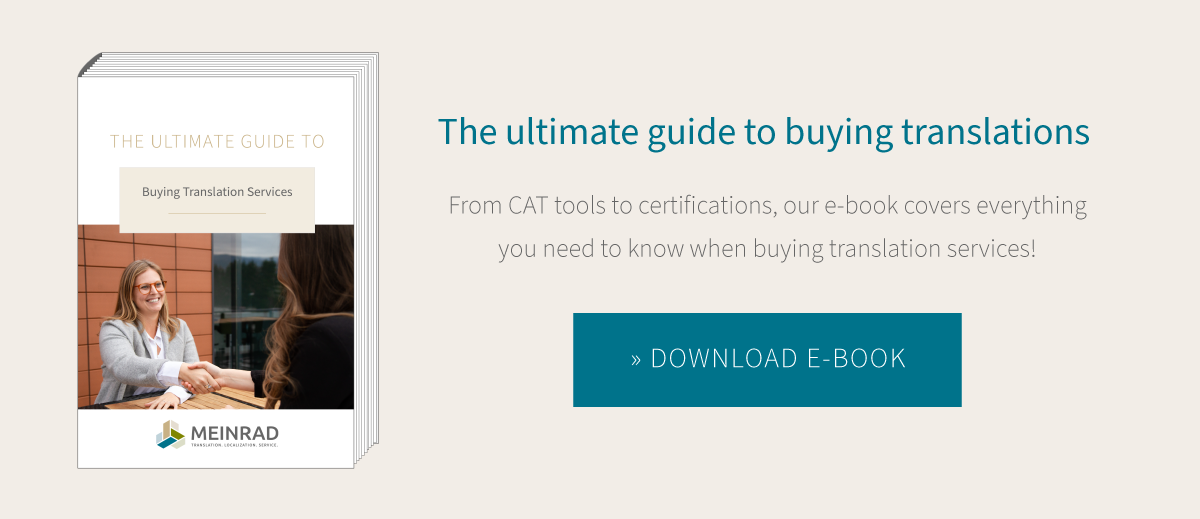 Although all quotes from translation service providers have the total price, often that’s the only thing they have in common. Different calculation methods and service packages can make comparing the cost of translation services extremely difficult. So here’s what to look out for when buying translation services.
Although all quotes from translation service providers have the total price, often that’s the only thing they have in common. Different calculation methods and service packages can make comparing the cost of translation services extremely difficult. So here’s what to look out for when buying translation services.
A pig in a poke
It’s a familiar problem in the service sector: as a client, you usually don’t know in advance what you’ll get for your money. And the translation sector is no different. A further complicating factor is that quotes can be calculated and presented in various ways. So when your services are delivered, you may be in for an unpleasant surprise – along with the inevitable invoice. In order to evaluate and compare quotes for translation services and avoid that unpleasant surprise, you should therefore clarify the following:
How was the quote calculated?
You can only compare quotes if you know how they were calculated. In German-speaking countries, until recently quotes were usually calculated on the basis of standard lines. But even within these regions, there have been different definitions of how long a standard line is: in Austria it’s usually 55 characters including spaces, but some translation agencies (primarily in Germany) define it as 53, 50 or 48 characters. Around the world, translation service providers are generally moving towards calculating quotes on the basis of word count. The problem is, there’s no direct relationship between price calculations based on word count and standard lines. Add in to the mix the fact that different CAT tools define words differently, resulting in different analyses, and different service providers use different CAT grids, resulting in different ways of showing client the savings made thanks to the translation memory systems, and you can see the challenge.
How does the translation service provider work?
Although standard methods of generating quotes can make it hard to assess, it’s important to know how translation service providers work. In particular, the following factors are key:
- Automation tools
Almost all professional language service providers now use computer-aided translation (CAT) tools. These tools use translation memories to build up a database of translations. When a new source text is sent for translation, the system checks if sentences or parts of sentences have previously been translated in the same or a similar form. These previous translations are then suggested to the translator, which helps them translate more quickly and saves the client money. - Quality of the translators
Fast, high-quality translations depend on more than just the translator’s knowledge of the source and target language: their specialist expertise is also crucial. The requirements vary according to the nature of the source text. Technical translations require corresponding expertise (e.g. in mechanical engineering), while for marketing texts what matters more is the translator’s creativity. - Review/proofreading process
There are two things to bear in mind when it comes to the costs of a review. Firstly, whether it was included in the cost per standard line/word, and secondly, how reviewers are selected (a key factor in a translation service provider’s ability to deliver high-quality translations).
Which project management services are included in the quote?
In most cases, the translation itself is only half the battle at best. The other half concerns how well the processes and structures involved in delivering language services are organized. Inefficient workflows can sometimes cost you as much as errors in the translation itself. So before placing the order, you should always ask yourself the following questions:
- Do the translation agency’s workflows fit your in-house workflows?
As the interface between their translators and your contacts (in Marketing, Documentation, IT, Purchasing etc.), a translation agency can either considerably reduce your workload or considerably add to it. - Can the service provider handle your file formats?
Professional language services should be able to handle both simple and complex file formats (e.g. from content management systems or single source publishing tools) and deliver their translations in formats which make it easy for you to use them in your systems. So you avoid expensive and time-consuming preparation before you send your texts for translation and editing after delivery.
Is the provider ISO-certified?
ISO 17100 certification requires that agencies only use qualified translators and reviewers. Unfortunately it’s not quite an cast-iron guarantee of quality, but it’s still a good starting point when looking for professional language services.
To summarize: Even if you can compare the quotes, the cheapest quote may not necessarily be the best option. It may be a false economy – you save money now, but later on it could cost you more as a result of poor translations, inefficient workflows or having to adapt file formats. So before you accept a quote, clarify which specific services you require for your project and to what extent they can be provided by your translation partner. And never make a decision solely on the basis of a written quote: you should always arrange a personal consultation. This will go a long way towards avoiding the proverbial pig in a poke.
Main image: © vegefox.com/Adobe Stock


